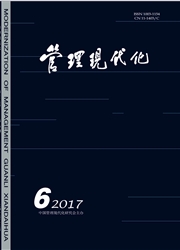

 中文摘要:
中文摘要:
为了在资源与环境约束下研究城市全要素生产率的结构与变化规律,对285个中国城市在2003—2014年间的绿色全要素生产率变化程度进行了测算、分解,其结果表明绿色全要素生产率以年均2.12%的速度增长,其中技术进步和技术效率提升的平均速度分别为1.74%与0.37%。绿色全要素生产率在累积增长率上小于传统全要素生产率,表明中国城市发展过程中的环境与资源代价过高;但也有部分城市能够实现经济增长与环境规制之间的有效协调。城市绿色全要素生产率的累积增长率存在中部〉东部〉西部的区域差异,技术进步在东部地区绿色全要素生产率增长过程中的贡献最高,而中、西部则相对较多地依赖技术效率改善。
 英文摘要:
英文摘要:
In order to grasp the structure characteristics and the change rule of city TFP under resource and environmental constraints, this paper carried out calculation and decomposition of the green TFP change level of 285 cities in China during the past 2003—2014 years. It is found that the green TFP of Chinas cities is growing at an average rate of 2.12%, and the average rates of technical change and efficiency change were 1.74% and 0.38%. The green TFP is not as good as the traditional TFP in the cumulative growth rate, indicating that Chinas cities have paid too much environmental and resource costs in terms of economic growth, but there are still some cities that can achieve effective coordination between economic growth and environmental regulation. The results of regional difference research show that the green TFP cumulative growth rate of central region is higher than that of eastern region, while the cumulative growth rate of eastern region is higher than that of western region; the contribution of technical change to the growth of green TFP in the eastern region is the highest, while the central and western regions are relatively more dependent on the improvement of efficiency.
 同期刊论文项目
同期刊论文项目
 同项目期刊论文
同项目期刊论文
 期刊信息
期刊信息
